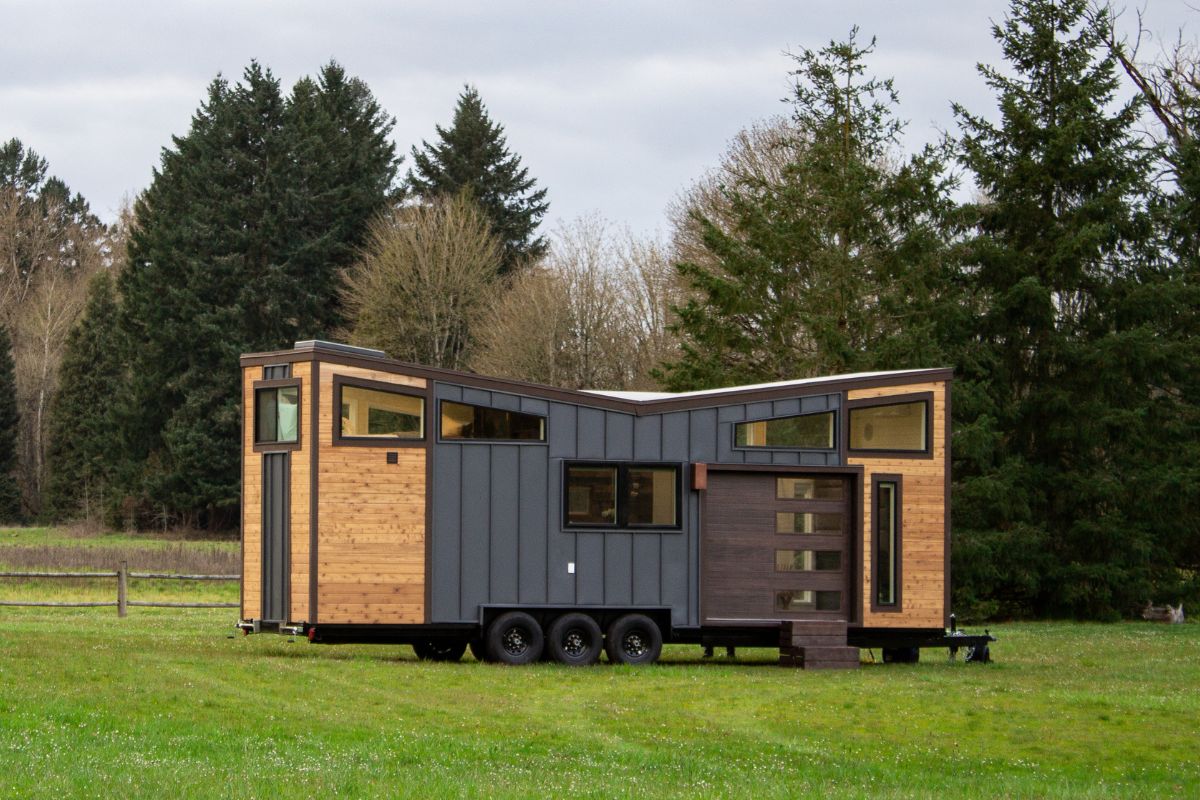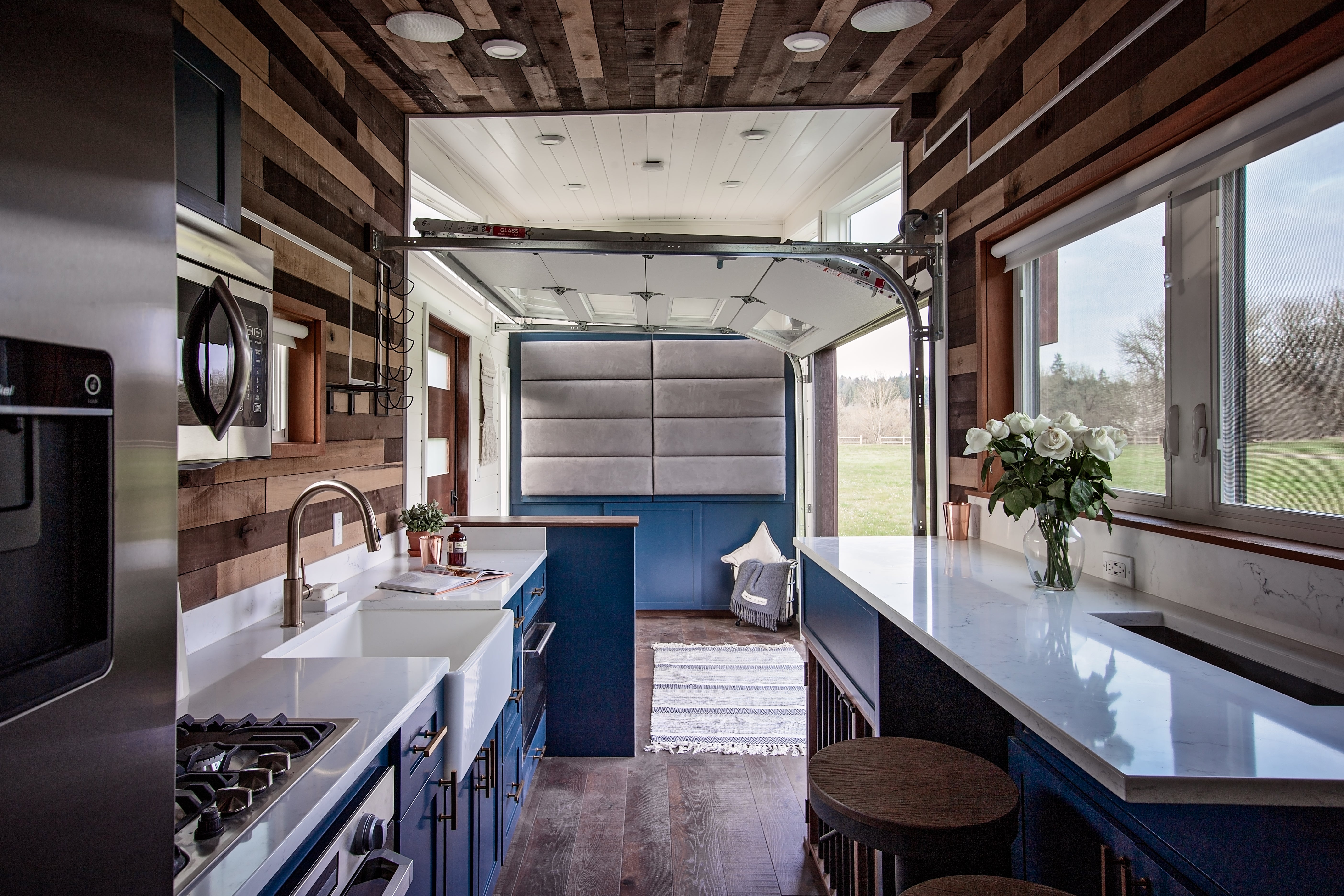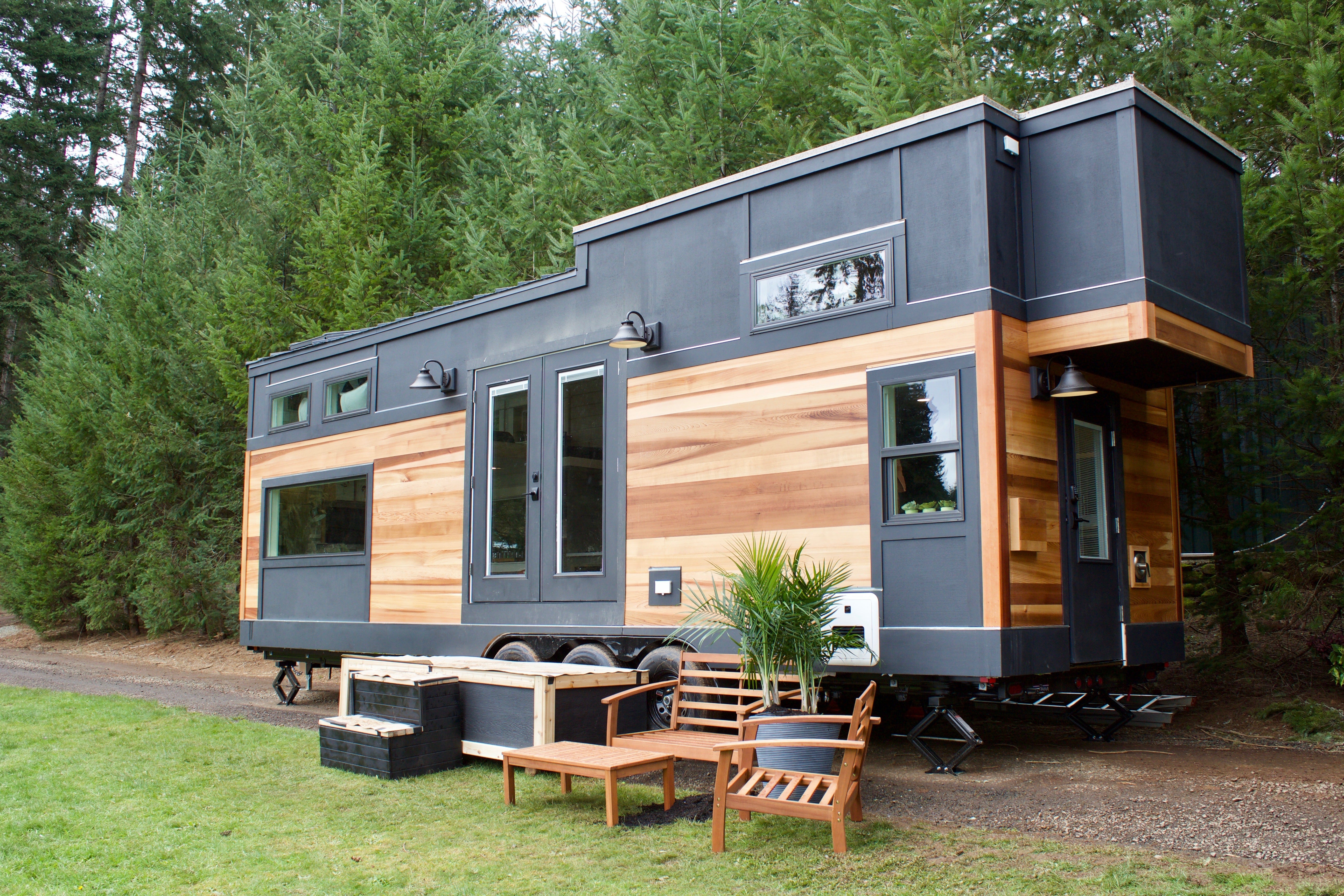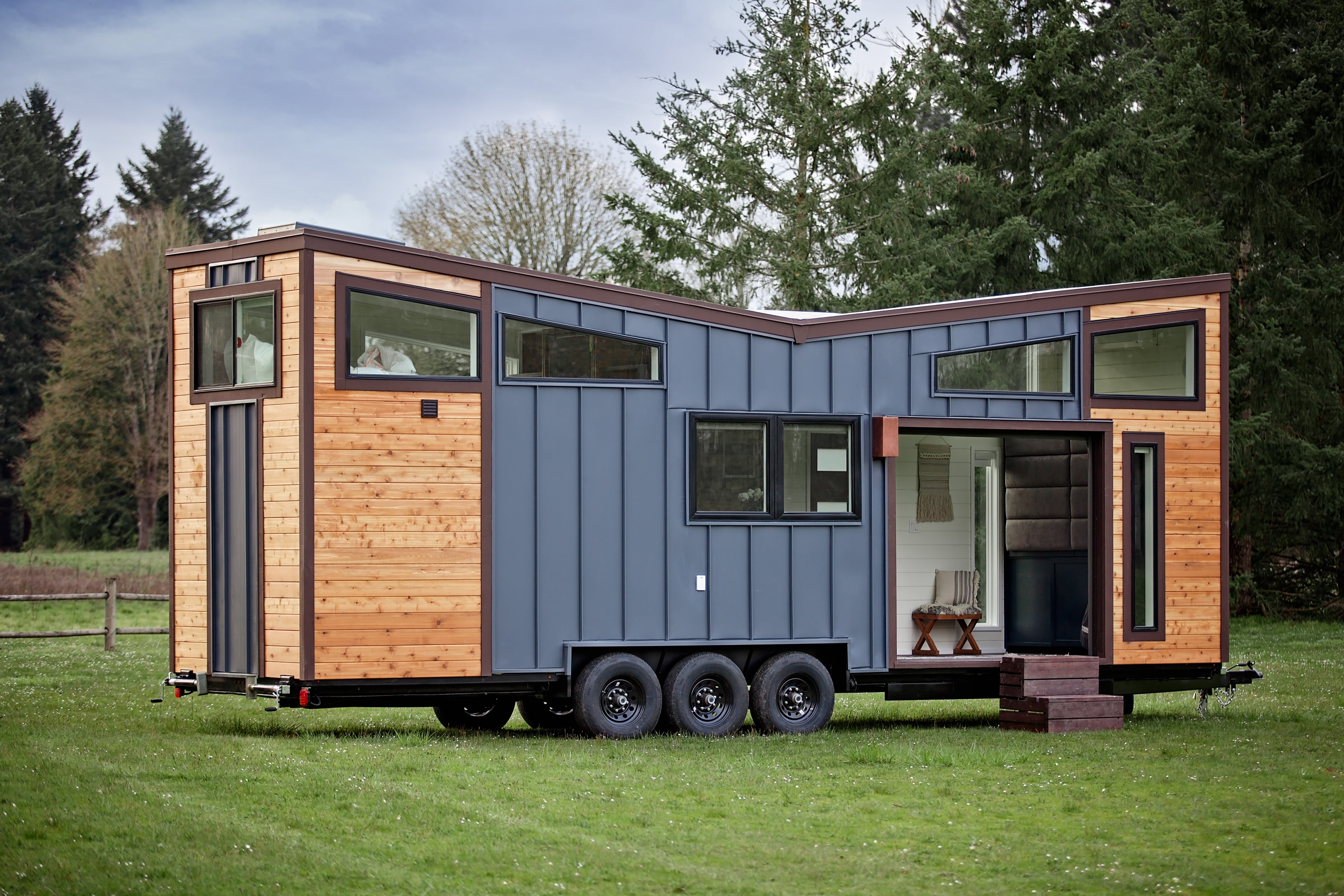Living in a tiny home comes with daily challenges that require clever solutions. You'll need to prioritize essential items to manage limited space and embrace multifunctional furniture. Privacy can be tricky, so consider using curtains or sliding doors while maintaining comfort with good insulation and proper ventilation.
Cooking in a small kitchen means relying on vertical storage and energy-efficient appliances. Bathrooms benefit from compact fixtures and effective exhaust fans. Regular maintenance is vital to avoid issues like plumbing leaks or inefficient solar panels. Implementing these strategies will help enhance your tiny living experience, offering further solutions to common hurdles.
Key Takeaways
- Managing limited space requires careful organization and multifunctional furniture to differentiate between needs and wants.
- Privacy can be challenging; use curtains or soundproofing to create distinct zones and minimize noise.
- Cooking in a small kitchen demands efficient use of vertical storage and multifunctional appliances.
- Ensuring energy efficiency involves choosing Energy Star appliances and monitoring energy consumption with programmable thermostats.
- Regular maintenance is crucial, including checking for plumbing leaks and ensuring electrical systems function properly.
Space Limitations
Living in a tiny home means making the most out of every square inch. You quickly realize that space limitations challenge your creativity and adaptability. The first step is to prioritize your essentials. Ask yourself what you truly need versus what you can live without. This mindset helps you eliminate unnecessary clutter and focus on items that serve multiple purposes.
One key aspect is furniture selection. Opt for pieces that can fold away or transform, like a dining table that doubles as a workspace or a sofa that converts into a bed. These multifunctional items maximize your living area without sacrificing comfort.
Consider your movement within the space. You'll need to navigate efficiently, so plan pathways that allow easy access to frequently used areas. Think vertically to take advantage of every nook and cranny. Shelves reaching up to the ceiling or hooks on walls can provide storage without encroaching on floor space.
Finally, embrace minimalism. Fewer possessions mean less to manage, clean, and organize. It's about quality over quantity, creating a harmonious environment where each item has a purpose. Living small doesn't mean sacrificing style or functionality; it's about smart, intentional choices.
Storage Solutions
As you embrace minimalism and make smart choices in your tiny home, finding clever storage solutions becomes your next priority. Start by utilizing vertical space. Install shelving units that reach up to the ceiling, allowing you to store items like books and decorative pieces without taking up valuable floor space. Consider multifunctional furniture, such as a bed with drawers underneath or a dining table that doubles as a desk.
Think about hidden storage options, too. Use ottomans with storage compartments or benches that open up to hold blankets and seasonal clothes. Magnetic strips in the kitchen can keep utensils within reach yet out of the way. In the bathroom, over-the-door organizers or suction-cup caddies can maximize space without drilling.
Don't forget about the power of decluttering. Regularly assess what you truly need and let go of items that no longer serve you. Embrace the concept of "one in, one out" to prevent unnecessary accumulation. Remember, the goal is to create a functional yet inviting space. With a bit of creativity and resourcefulness, your tiny home can stay organized, making daily life more enjoyable and efficient.
Privacy Concerns
Steering through privacy concerns in a tiny home requires thinking outside the box. With limited space, maintaining personal boundaries can be challenging. You can start by utilizing curtains or sliding doors to create distinct zones. These flexible barriers offer separation without taking up too much room. Consider using multi-functional furniture that doubles as a divider, like a bookshelf that also serves as a wall.
Sound privacy can be an issue, too. You might want to invest in headphones for private listening or soundproofing materials to minimize noise transfer between areas. You should also establish clear communication with your cohabitants about when privacy is needed. Setting specific times for alone time can help maintain harmony.
For visual privacy, strategic placement of mirrors can be beneficial. Mirrors not only create an illusion of more space but also reflect light, making small areas feel less cramped. Additionally, using frosted or textured glass for bathroom privacy can be effective without compromising on style.
Ultimately, addressing privacy in a tiny home demands creativity and communication. By implementing clever design solutions and setting boundaries, you can enjoy the benefits of tiny living without sacrificing personal space.
Cooking Constraints
Maneuvering the cooking constraints in a tiny home requires adaptability and smart planning. You're working with a compact space, so organization becomes essential. A clutter-free kitchen guarantees you make the most out of every inch. Use vertical storage solutions, like hanging pots and pans, to keep your counters clear. Magnetic strips can hold knives and metal utensils, freeing up drawer space.
Choosing multi-functional appliances is a game changer. Consider a combination toaster oven and microwave or a stovetop that doubles as extra counter space when not in use. With limited burners, meal planning gets creative. Simplify recipes and focus on one-pot meals to cut down on cooking and cleaning time.
Ventilation is another challenge. Without a proper range hood, smells and smoke can linger. Open windows and use portable fans to circulate air. Cooking in smaller batches helps too, reducing heat and steam.
Think about energy efficiency. Tiny homes might have limited power sources, so choosing energy-efficient appliances keeps your consumption in check. Ultimately, cooking in a tiny home pushes you to be resourceful, encouraging a minimalist approach that can lead to healthier, simpler meals and a more organized kitchen.

Bathroom Challenges
Maneuvering bathroom challenges in a tiny home demands creativity and smart design choices. You're working with a limited footprint, so maximizing every inch is essential. Start by investing in compact fixtures. A corner sink can free up floor space, while a wall-mounted toilet saves precious inches. Consider a wet bath—where the shower, toilet, and sink share the same space—as it's a clever way to integrate multiple functions in one area.
Storage is another hurdle. Opt for vertical solutions like shelves or cabinets above the toilet to keep essentials organized. A medicine cabinet with a mirror can combine two functions, saving both space and effort. Hooks and over-the-door racks can hold towels and robes without cluttering the floor.
Ventilation is important in a tiny bathroom to prevent moisture buildup. An efficient exhaust fan keeps air circulating and reduces the risk of mold. Skylights or small windows can also enhance airflow and natural light, making the space feel larger.
Finally, choose light colors and reflective surfaces to create an illusion of space. With thoughtful planning, you can transform a cramped bathroom into a functional, inviting retreat.
Hosting Guests
Hosting guests in a tiny home can be both a delight and a challenge. You love sharing your cozy space, but accommodating others requires some creativity. Start by maximizing your space. Consider multi-functional furniture like a sofa bed or fold-out table. Every inch counts, so rearrange items to create a welcoming environment.
Plan ahead for meal times. Tiny kitchens need efficiency, so opt for simple, one-pot meals or use your outdoor grill for extra cooking space. Encourage guests to bring their favorite snacks or drinks, which eases the burden on your limited pantry.
Think about privacy. While your home might not have separate guest rooms, you can use curtains or screens to create a sense of personal space. If guests stay overnight, provide them with earplugs or sleep masks to enhance their comfort.
Lastly, embrace the intimacy. A tiny home encourages close conversations and shared activities. Plan small group games or watch movies together. Outdoor spaces can also extend your living area, so make use of patios or nearby parks for gatherings.
Hosting in a tiny home means thinking outside the box, but your warmth and hospitality make any space feel welcoming.
Energy Efficiency
When it comes to energy efficiency in a tiny home, every watt counts. With limited space, you need to be strategic about energy use. Start by choosing energy-efficient appliances. Opt for LED lights, which consume considerably less power than traditional bulbs. Solar panels can be a game-changer, offering renewable energy that reduces dependence on the grid.
Insulation plays a critical role. Verify your home is well-insulated to prevent energy waste. Double-glazed windows help keep the inside cozy without overworking your heating or cooling systems. Small spaces can heat up quickly, so prioritize appliances with energy star ratings.
Consider installing a tankless water heater. It heats water on demand, saving energy compared to traditional water heaters that maintain a constant temperature. Embrace smart technology with programmable thermostats and energy monitoring systems. These allow you to track usage and make adjustments in real-time.
Don't forget about phantom loads—electronics that consume energy even when turned off. Unplug devices or use smart power strips to mitigate this. By focusing on these strategies, you'll maximize efficiency, reduce costs, and contribute to a more sustainable lifestyle in your tiny home.
Temperature Control
After optimizing energy efficiency, it's time to focus on maintaining a comfortable temperature in your tiny home. With limited space, temperature control becomes both a challenge and an opportunity. First, consider insulation. High-quality insulation in walls, floors, and ceilings helps keep heat in during winter and out during summer. It's a straightforward way to stabilize your indoor climate year-round.
Next, think about using multi-functional heating and cooling systems. A mini-split system offers both heating and air conditioning, perfect for tight spaces. It's energy-efficient and doesn't take up much room. You might also explore space heaters or portable fans as supplementary options. Remember, every cubic foot counts in a tiny home.
Natural ventilation is your friend. Strategically placed windows can create cross-breezes, reducing reliance on mechanical systems. In addition, light-colored window treatments can reflect heat from the sun, keeping interiors cooler during sweltering months.
Finally, consider the placement of your tiny home. Positioning it to take advantage of natural shade or sunlight can greatly impact temperature control. By integrating these strategies, you can create a cozy environment without sacrificing the unique benefits of tiny home living.
Maintenance Issues
Maintaining a tiny home often presents unique challenges, but with regular attention, these can be effectively managed. In such compact spaces, even minor issues can quickly become major inconveniences. For instance, plumbing problems can escalate fast, given the limited space and often non-standard fixtures. Regularly check for leaks under sinks and around the toilet. Tighten loose connections to prevent water damage, which is harder to manage in tiny homes.
Another area needing attention is your electrical system. With everything packed into a small space, faulty wiring can pose a significant risk. Confirm all outlets and switches are functioning properly, and don't overload circuits. Regularly inspect your solar panels, if you use them, to verify they're clean and working efficiently.
Ventilation is essential in a tiny home to prevent mold and moisture buildup. Clean your vents and fans regularly, and make certain your windows open easily for fresh air. Address any signs of mold immediately, as it can spread quickly in confined spaces.
Finally, keep an eye on your roof and siding. Tiny homes often move, causing wear and tear. Regular inspections can help you spot potential issues early, saving you time and costly repairs.
Conclusion
Living in a tiny home presents unique challenges, but you're equipped to tackle them. Embrace creative storage solutions to keep your space organized and clutter-free. Prioritize privacy by setting boundaries within the compact layout. Innovate in the kitchen to make cooking enjoyable and efficient.
Adapt your bathroom routine to suit limited space. Hosting guests can be cozy and intimate. Focus on energy efficiency and maintain comfort with effective temperature control. With proactive maintenance, you'll thrive in your tiny haven.






Share: